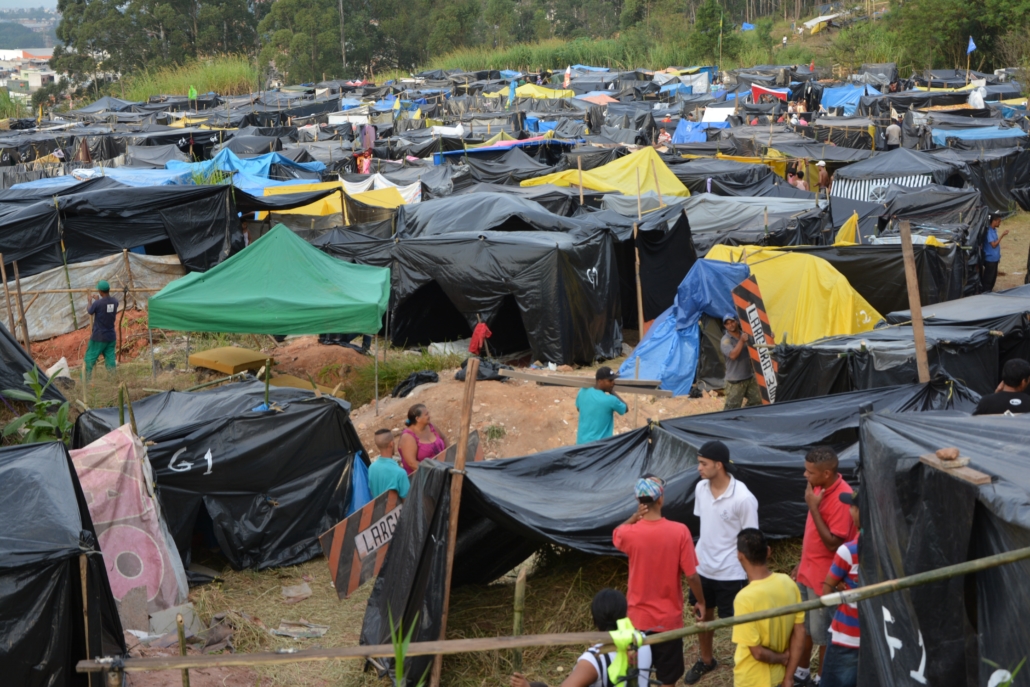10 Facts About Homelessness in Brazil

In recent decades, Brazil has advanced its industrialization, gross national income and life expectancy. Since 2014, however, the country has struggled with rising poverty and inequality. Brazil’s declining economy has led to a nationwide homelessness crisis. Here are 10 facts about homelessness in Brazil.
10 Facts About Homelessness in Brazil
- Approximately 1.2 million Brazilians are either homeless or living in inadequate housing. This housing crisis was, in part, caused by rising land costs. Brazil’s industrialization and involvement in globalization raised land prices. As a result, poor and unemployed Brazilians are unable to afford land costs and are forced to remain in unsanitary and overcrowded conditions.
- Brazil’s homeless tend to live near major cities like Rio de Janeiro and São Paulo. The country’s increasing urbanization contributes to these cities’ housing deficits, with more than four in five Brazilians living in urban areas. The vast majority of those in need of housing are from low-income families. Recent wage cuts and unemployment rates passing 12% have ensured that 1.2 million Rio residents remain in “favelas,” Brazil’s shantytowns.
- The number of houses built for families making $550 or less in Brazil’s cities has drastically decreased. Brazilian real-estate development now focuses on high-income buyers. From 2013 to 2016, the number of low-income housing fell by 500,000 units. Coupled with the growing urban population, this exacerbates homelessness in Brazil.
- In São Paulo, Brazil’s most populated city, homelessness is growing at 2-3% per year. Rio de Janeiro has experienced rapidly growing rates of homelessness as well, increasing by 150% from 2014 to 2017. With some success, city governments have launched programs to move the homeless into shelters and family housing.
- Without proper security, Brazil’s homeless are susceptible to physical, psychological and sexual violence. Between 2015 and 2017, there were 17,386 reported instances of abuse against the homeless, ranging from beatings and psychological abuse to sexual harassment. Given Brazil’s widespread drug trafficking occurring on the streets of favelas, the homeless are vulnerable to violence by both drug factions and the police.
- In 2009, the Brazilian government began a housing program for low-income Brazilians. This program, called Minha Casa, Minha Vida (My House, My Life), provided more than 10 million Brazilians with secure housing offers over seven years. In 2016, however, the government made major cuts to the program.
- The majority of Brazil’s homeless are Black, a remnant of the country’s legacy of slavery and racism. Previous discriminatory legislation, such as the criminalization of homeless Black people, has contributed to the disproportionate 67% majority of homeless individuals being Black. Meanwhile, the general Black population is only 45%. Moreover, young Black men are the majority of victims in extrajudicial killings by police officers, particularly in favelas.
- Since 1997, Brazil’s Homeless Workers Movement (MTST) has led protests and demonstrations to secure justice for the growing homeless population. Originating in São Paulo, MTST outwardly criticizes the exponential increases of real estate and rental prices. The movement remains a quintessential voice in driving urban policy, playing a key role in the implementation of social programs like ‘Minha Casa, Minha Vida.’ Furthermore, the movement outlines ways to reform such programs and address resulting urban segregation — particularly as impoverished Brazilians settle in urban peripheries.
- With the second-highest number of cases in the world, Brazil’s homeless are extremely vulnerable to the disease. As COVID-19 continues to spread, São Paulo’s city government has invested in general and COVID-specific homeless shelters. Other government initiatives include state-driven subsidy programs to provide breakfast, lunch and dinner to the homeless. NGOs like Doctors Without Borders provide medical assistance to homeless citizens, who suffer more COVID-19 cases than the general population. Despite this attention, the homeless continue to lack adequate hygiene resources.
- Civil society campaigns and organizations spread awareness and conduct on-the-ground missions. Rio Invisível, for instance, is an advocacy project based in Rio de Janeiro that shares interviews with homeless citizens on social media. By helping the homeless share their stories, the project breaks down prejudice toward the city’s most marginalized. Habitat for Humanity has also been involved in advocacy in Brazil, becoming a powerful voice in public policy, pushing for an end to the housing shortage. The non-profit partners with the Brazilian government to construct houses for vulnerable families, in addition to offering week-long “Habitat Global Village” volunteer opportunities in Brazil.
Precarious housing and homelessness in Brazil remain a prominent issue, affecting approximately 1.2 million citizens. The crisis is exacerbated by rising land prices and a worsening housing deficit in urban regions. However, as awareness has grown, efforts by state and non-state actors to address homelessness have expanded. Nevertheless, Brazil must continue to fund social programs to alleviate poverty and homelessness.
– Breana Stanski
Photo: Flickr
